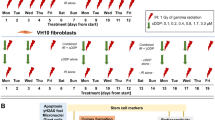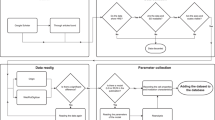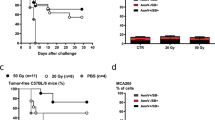Abstract
CHINESE hamster cells which survived 1,500 rads (a survival fraction of ≈2 × 10−3) were found to have several heritable altered biological properties. These included a slower cell population doubling time, a smaller cell size, an abnormal chromosome number and morphology, and an increased radio-sensitivity—namely a D0 value of ≈135 rads instead of the 205 rads for the unirradiated or control cell line. Furthermore, these characteristics persisted in a number of the sub-lines for many months of continuous culture1. That changes of this type should occur in cells of tissue irradiated in vivo is plausible, and if they do occur such alterations would have important implications for tumour radiobiology and for clinical radiotherapy. This report describes an initial experiment that was designed to test for such an effect.
This is a preview of subscription content, access via your institution
Access options
Subscribe to this journal
Receive 51 print issues and online access
$199.00 per year
only $3.90 per issue
Buy this article
- Purchase on Springer Link
- Instant access to full article PDF
Prices may be subject to local taxes which are calculated during checkout
Similar content being viewed by others
References
Sinclair, W. K., Radiat. Res., 21, 584 (1964).
Suit, H. D., Shalek, R. J., and Wette, R., Cell. Radiat. Biol., 514 (1964).
Nunnally, J., Worsnop, R., and Shalek, R. J., Cell. Radiat. Biol., 531 (1964).
Author information
Authors and Affiliations
Rights and permissions
About this article
Cite this article
SUIT, H. Response to X-irradiation of a Tumour recurring after a TCD95 Radiation Dose. Nature 211, 996–997 (1966). https://doi.org/10.1038/211996a0
Issue Date:
DOI: https://doi.org/10.1038/211996a0
Comments
By submitting a comment you agree to abide by our Terms and Community Guidelines. If you find something abusive or that does not comply with our terms or guidelines please flag it as inappropriate.



